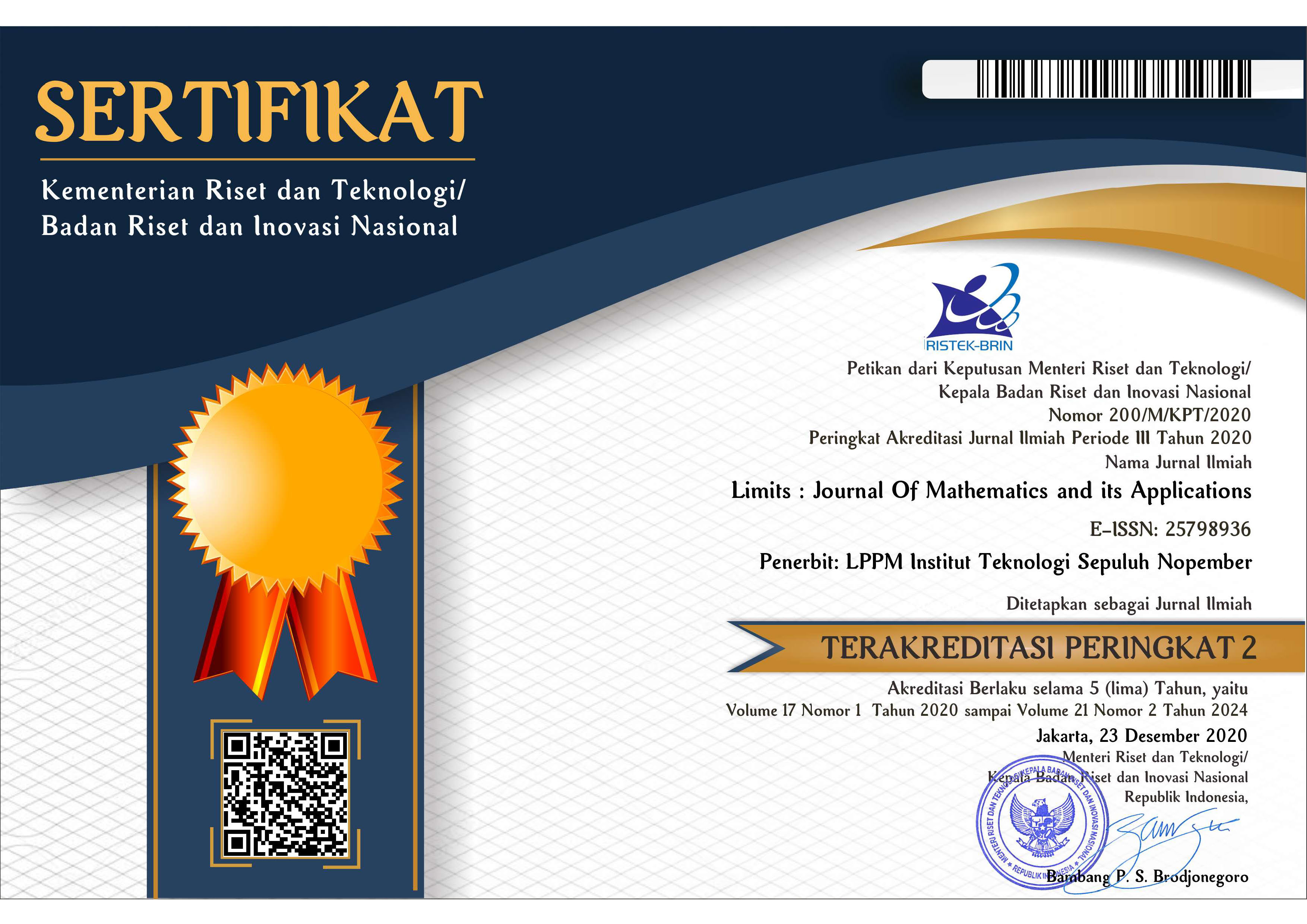Model Matematika Tingkat Partisipasi Masyarakat dalam Pemilu di Indonesia
Abstract
General elections in Indonesia are a means of people's sovereignty for the election of president and vice president as well as legislative officials which are carried out directly, publicly, freely, confidentially, honestly, and fairly every 5 years. One indicator of election success is the level of public participation. In every general election, there must be white groups or called abstainers who consciously do not exercise their right to vote for their own reasons. This group of abstainers can influence other people not to exercise their right to vote. In this paper, we discussed about the mathematical model of the level of public political participation in general elections. In this mathematical model, the abstainer-free equilibrium point, the abstainer equilibrium point, and the basic reproduction number will be determined. The analysis shows that for Ro<1, free abstainer equilibrium point is asymptotically stable and for R0>1, the abstainer equilibrium point is exists and asymptotically stable. Finally, a numerical simulation will be carried out to verify the results of the theoretical analysis. The numerical simulation shows that the condition of the abstainer-free population can be achieved but it takes a very long time.
Keywords
Full Text:
PDFReferences
F. , Halim dan M. Lalongan, Partisipasi Politik Masyarakat :Teori dan Praktik. SAH MEDIA, 2016.
Badan Pusat Statistik (BPS) Republik Indonesia, “Statistik Politik 2019,” https://www.bps.go.id/publication/2019/12/17/0da6c0d9d84d5200d4d38799/statistikpolitik- 2019.html.
Kompas.com, “Data Terbaru KPU, Jumlah Pemilih pada Pemilu 2024 Turun 637.179,” https://nasional.kompas.com/read/2022/07/13/09283051/dataterbaru-kpu-jumlah-pemilih-pada-pemilu-2024-turun-637179.
Universitas Gadjah Mada, “Percakapan Golput Pemilu 2019 di Media Sosial Banyak Dijumpai di Jawa,” https://www.ugm.ac.id/id/berita/17711-percakapangolput-pemilu-2019-di-media-sosial-banyak-dijumpai-di-jawa.
B. Yong, “A Mathematical Modelling of The Dynamics of Voters Model of Two Political Fanaticism Figures with The Interaction Between Voters in Indonesian Presidential Elections,” J Phys Conf Ser, vol. 2123, no. 1, hlm. 012006, Nov 2021, doi: 10.1088/1742-6596/2123/1/012006.
B. Yong dan N. A. Samat, “The SIR political fanaticism figure voters model for estimating number of votes in Indonesian presidential elections,” Model Assisted Statistics and Applications, vol. 13, no. 3, hlm. 279–286, Agu 2018, doi: 10.3233/MAS-180434.
B. Yong, “Effect of Undecided and Swing Voters on The Dynamics Voters Model in Presidential Elections,” J Phys Conf Ser, vol. 2123, no. 1, hlm. 012012, Nov 2021, doi: 10.1088/1742-6596/2123/1/012012.
B. Yong dan N. A. Samat, “THE DYNAMICAL ANALYSIS OF TWO-POLITICAL FIGURES FEVER MODEL,” Far East Journal of Mathematical Sciences (FJMS), vol. 101, no. 6, hlm. 1353–1362, Mar 2017, doi: 10.17654/MS101061353.
O. Balatif, A. Labzai, dan M. Rachik, “A discrete mathematical modeling and optimal control of the electoral behavior with regard to a political party,” Discrete Dyn Nat Soc, vol. 2018, 2018, doi: 10.1155/2018/9649014.
O. Balatif, B. Khajji, dan M. Rachik, “Mathematical Modeling, Analysis, and Optimal Control of Abstinence Behavior of Registration on the Electoral Lists,” Discrete Dyn Nat Soc, vol. 2020, 2020, doi: 10.1155/2020/9738934.
DOI: http://dx.doi.org/10.12962%2Flimits.v20i3.16301
Refbacks
- There are currently no refbacks.
Jumlah Kunjungan:

Limits: Journal Mathematics and its Aplications by Pusat Publikasi Ilmiah LPPM Institut Teknologi Sepuluh Nopember is licensed under a Creative Commons Attribution-ShareAlike 4.0 International License.
Based on a work at https://iptek.its.ac.id/index.php/limits.






